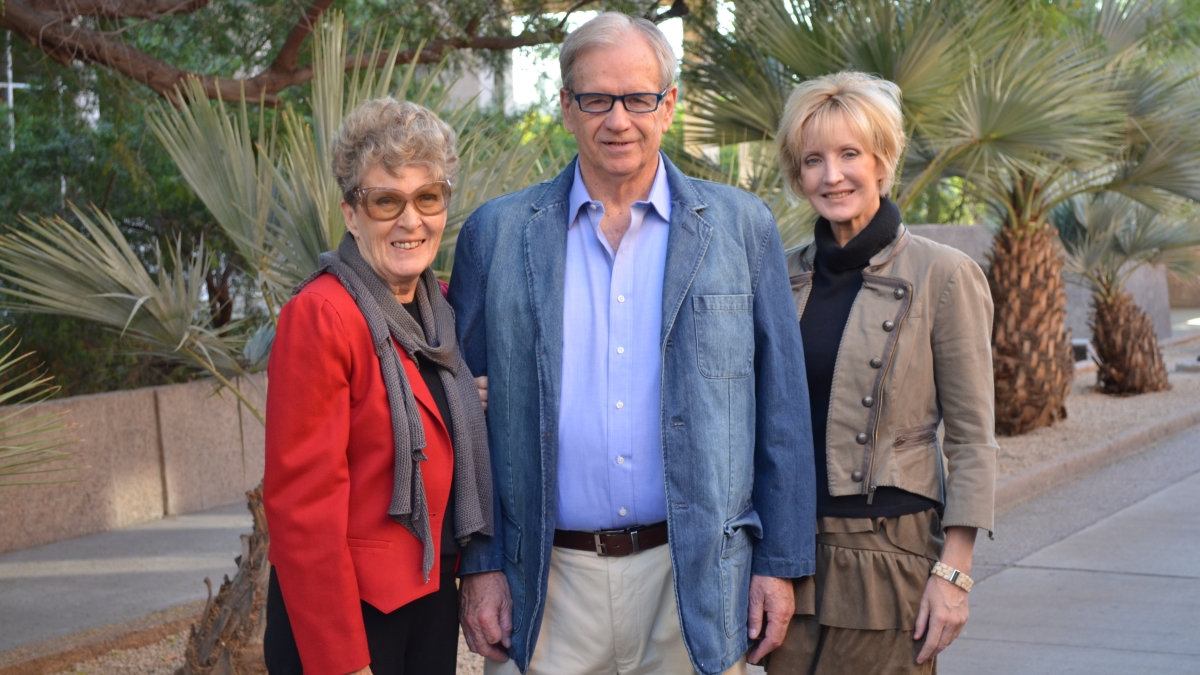ASU alum Max Nickerson receives School of Life Sciences lifetime achievement award

Arizona State University’s School of Life Sciences honored Max Nickerson, an ASU alumnus, with the Distinguished Alumni Award to recognize a lifetime of achievements in vertebrate zoology and herpetology research. Nickerson received the award Dec. 7 when he delivered his School of Life Sciences Distinguished Alumnus Lecture “Hellbenders, Habitats, and Health: Challenges of Declining Lotic Habitats.”
For over forty years, Nickerson has studied the populations of endangered Ozark hellbender salamanders in their habitat along the North Fork of the White River in Missouri. His extensive research and collaborations have uncovered links between declining habitat quality and the health and size of salamander populations. Nickerson’s conservation efforts for reptiles and amphibians, as well as his contributions of original research, have brought him international renown.
“I have to say I am surprised, pleased and honored,” said Nickerson about receiving the award. “I feel very fortunate to have gone to ASU. I owe a lot to this university. They really made a life scientist out of me.”
His career began in 1960, when he took a job managing ASU’s herpetology collection. Anyone who has walked the halls of ASU’s Life Sciences A building has probably stopped to gaze at the many reptile exhibits, just like Nickerson’s daughter Cheryl did while visiting her dad during his doctoral studies. Back then, ASU looked a bit different. A gravel parking lot surrounded the only life science building on campus. Max didn’t have to stray far to find and collect critters. In fact, the largest Mojave rattle snake he ever found was near Scottsdale Road.
After earning a doctorate from ASU in zoology in 1968, Nickerson’s career blossomed. He served as curator for natural history museums, edited major herpetological journals, acted as president of national and international societies, and became an advisor to the BBC and National Geographic, all while producing a continuous stream of original research papers.
Max’s passion for the conservation of life is infectious. He has touched the lives of many people as a devoted teacher and mentor, zoo and museum developer and curator. The most important mentee in his life, his daughter Cheryl, is now a leading microbiologist in ASU’s School of Life Sciences and researcher for the university’s Biodesign Institute.
When advising biologists beginning their careers, Nickerson suggests thinking outside the box.
“It’s important to get a broad educational experience,” Nickerson said. “Communication across the entire field is essential. When you talk about conserving life, you need everyone involved.”
Nickerson currently is curator of herpetology at the Florida Museum of Natural History, affiliate professor in the College of Wildlife Ecology and Conservation; affiliate professor in the Center for Latin American Studies; and Curator in the School of Natural Resources and the Environment at the University of Florida.
School of Life Sciences is an academic unit of the College of Liberal Arts and Sciences.
Written by Gabi Malo, gabrielle.delphine.malo.3@asu.edu
Media contact: